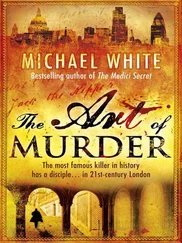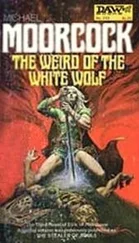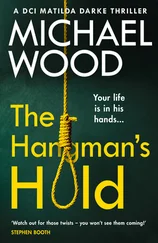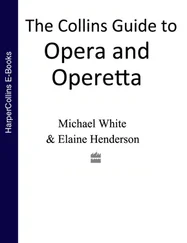Michael White - The Medici secret
Здесь есть возможность читать онлайн «Michael White - The Medici secret» весь текст электронной книги совершенно бесплатно (целиком полную версию без сокращений). В некоторых случаях можно слушать аудио, скачать через торрент в формате fb2 и присутствует краткое содержание. Жанр: Триллер, на английском языке. Описание произведения, (предисловие) а так же отзывы посетителей доступны на портале библиотеки ЛибКат.
- Название:The Medici secret
- Автор:
- Жанр:
- Год:неизвестен
- ISBN:нет данных
- Рейтинг книги:4 / 5. Голосов: 1
-
Избранное:Добавить в избранное
- Отзывы:
-
Ваша оценка:
- 80
- 1
- 2
- 3
- 4
- 5
The Medici secret: краткое содержание, описание и аннотация
Предлагаем к чтению аннотацию, описание, краткое содержание или предисловие (зависит от того, что написал сам автор книги «The Medici secret»). Если вы не нашли необходимую информацию о книге — напишите в комментариях, мы постараемся отыскать её.
The Medici secret — читать онлайн бесплатно полную книгу (весь текст) целиком
Ниже представлен текст книги, разбитый по страницам. Система сохранения места последней прочитанной страницы, позволяет с удобством читать онлайн бесплатно книгу «The Medici secret», без необходимости каждый раз заново искать на чём Вы остановились. Поставьте закладку, и сможете в любой момент перейти на страницу, на которой закончили чтение.
Интервал:
Закладка:
Cosimo was married to Contessina de' Bardi in 1416 and they had two children, Piero and Giovanni. Upon his death in 1464, Cosimo was indeed named Pater Patriae, Father of his Country. His eldest son, Piero then became the Florentine leader. Known as Piero the Gouty, he was plagued with bad health and died in 1469, just five years after his illustrious father. His son Lorenzo became, after Cosimo, the most highly regarded and successful Medici of them all. Known as Lorenzo the Magnificent, he was, like his grandfather and father, the first citizen of Florence, and for twenty-three years he was effectively the political leader of the city state, guiding Florence through a period of unprecedented stability and growth.
The character of Contessina as portrayed in the novel bears almost no relationship to the real-life wife of Cosimo de' Medici. According to official histories, she had no special physical powers and was not educated by a magus such as Valiani, but she was certainly a very intelligent and loyal woman, who was devoted to Cosimo and supportive of his endeavours. Further Reading: The Rise and Fall of the House of the Medici, Christopher Hibbert, Allen Lane, London, 1974. Da Ponte Antonio da Ponte was the designer of the Rialto Bridge in Venice which was completed in 1591. The story about the Devil and da Ponte's wife and child has been adapted from an old Venetian fable in which the site supervisor at the bridge, Sebastiano Bortoloni, was the person visited by Lucifer.
Florence Flood
On the night of 3 November 1966 Florence suffered the worst natural disaster in its long history. At about 4 a.m. a huge volume of water from the Valdarno Dam caused the Arno to burst its banks. The water swept away cars and trees, crashed into churches and ancient palaces and burst into steel-lined vaults. Gas, electricity and water supplies were cut off and the city's electric clocks stopped at 7.26 a.m. At its highest, the water reached over six and a half metres in areas around Santa Croce.
At least thirty people died, and 50,000 families were made homeless by the flood. In addition, 15,000 wrecked cars were strewn about the streets and 6,000 shops were put out of business. According to the best estimates, in the space of a few hours, some 14,000 works of art were damaged along with three to four million books and manuscripts.
Golem Korab
This is not an Indian pudding but the tallest mountain in Macedonia, rising to almost 10,000 feet above sea level. The area is dotted with lakes but there is no Lake Angja and no monastery on the mountain. If there was ever a castle close by, it has completely vanished.
Humanism
As Europe was dragged from the bleakness of the Dark Ages, an awareness of what could be achieved and a conviction that humanity could do better than it had done already was a tremendous spur to adventurism, both in word and in deed. It led to the age of discovery, and to the beginnings of modern scientific thinking as well as providing a fertile ground for the artistic endeavours we see as emblematic of the Renaissance.
The importance of this shift in perception cannot be overestimated. With a few notable exceptions, such as Roger Bacon, people since the fall of Rome had been paralysed by a deep-rooted sense of unworthiness. Central to their thinking and encouraged by Christian dogma, was the notion that humans were mere creatures of God, pawns in a world where the forces of nature and the will of the Lord were everything, a world in which the individual was totally without significance. Such thinking could only lead to a stagnant society, and although the belief that God controlled the universe and was directly involved in all aspects of human existence dominated mainstream thinking until the Darwinian revolution, some Renaissance figures thought differently.
Some of the greatest intellects of the Renaissance believed whole-heartedly in the idea that human intellect should be treasured and nourished. In this paradigm shift, we may see the impact of Platonic philosophy evolving into what has been called human virtue, a central tenet of Active Humanism. At the heart of Platonic philosophy is the concept that humanity can find God through unravelling the secrets of Nature. For Plato this was the foundation of 'inspiration', and it became a crucial element in the thinking of many of the best minds of the Renaissance. A number of great and influential figures such as Leonardo da Vinci, Giordano Bruno, Machiavelli and Cosimo de' Medici understood this Platonic ideal.
Many Humanists subscribed to the view that virtue stood apart from conventional religion and saw it as an entirely human quality that could bring the individual closer to the essence of Nature. Indeed, the early Humanist scholar Leon Battista Alberti once wrote that those who possessed virtue were 'capable of scaling and possessing every sublime and excellent peak'.
This thinking represented a revolutionary way of perceiving the world, prompted by the great rediscovery of human worth and a positive realigning of the role of humanity in God's universe. It was a truly essential element of the Renaissance.
I Seguicamme (The Followers)
This is an imaginary secret society, but Venetian history is littered with strange sects and secret communities. Giordano Bruno was involved in various splinter groups of the pan-European Rosicrucians in the Republic, and for centuries Venice was a nexus for magi and itinerant mystics and occultists.
The Venetian authorities were famously lenient towards those the Catholic Church considered heretics and it was a haven for those with radical views. Many alternative philosophies were allowed to flourish in Venice and Venetian publishers pushed the boundaries of what was allowed in a Europe dominated by Catholic dogma.
Mauro's Mappamundi
Father Mauro was a cartographer who lived and worked in a monastery on San Michele in Isola which is the cemetery of Venice. In The Medici Secret the details of his story have been elaborated, but the basis of this part of the novel is true. Between 1457 and 1459, Father Mauro did, with the help of his assistant Andrea Bianco, a sailor-cartographer, create as a commission from King Alfonso V of Portugal a very beautiful map of the world (or mappamundi). The map was completed in April 1459, just months before Mauro's death. It was sent to Portugal, but has not survived to the present day. A copy of the map is on display in the Biblioteca Nazionale Marciana in Venice.
Niccold Niccoli
The description of Niccolo Niccoli in The Medici Secret is quite close to what we know of the real man. He was forty-four in 1410 when the story is set, and he was a Florentine nobleman, who had, in his younger days, been an admired condotierre. He was tough, good in a fight and he understood military matters. He also had a thing about wearing an ancient red toga. But there was much more to Niccoli. He became famous in Italy as a man of high culture who did much to further the course of learning and discovery. He was a great traveller and owned the largest and best library in Florence. His greatest contribution came from his services to Classical literature, both as a copyist and collator of ancient manuscripts. These included works by such luminaries as Lucretius and Plautus. He is also famous as the inventor of italic script. I did, however, change a few details. Niccolo died in 1437, so in reality, he could not have corresponded with Contessina in the 1460s.
Palaeopathology
Palaeopathology is the study of ancient diseases, and the branch of this discipline known as Human Palaeopathology is becoming increasingly well recognised as an important tool in criminal investigation.
The most obvious evidence from a body is some sort of traumatic injury such as a smashed skull or severed limbs, but more subtle deformities may point to such afflictions as oesteoarthritis and gout. Using relatively simple chemical analysis certain diseases (including tuberculosis and syphilis) may also be discovered from surviving bones.
Читать дальшеИнтервал:
Закладка:
Похожие книги на «The Medici secret»
Представляем Вашему вниманию похожие книги на «The Medici secret» списком для выбора. Мы отобрали схожую по названию и смыслу литературу в надежде предоставить читателям больше вариантов отыскать новые, интересные, ещё непрочитанные произведения.
Обсуждение, отзывы о книге «The Medici secret» и просто собственные мнения читателей. Оставьте ваши комментарии, напишите, что Вы думаете о произведении, его смысле или главных героях. Укажите что конкретно понравилось, а что нет, и почему Вы так считаете.












